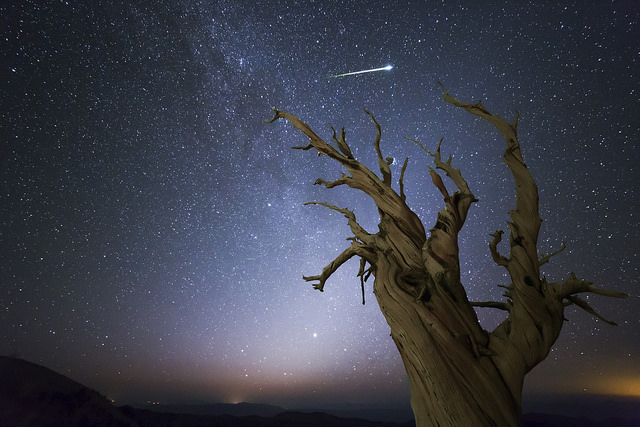What’s rarer than a unicorn? Perhaps, its spying a a elusive meteor outburst from the heart of one…
Ready for more meteor shower action? Thus far this season, we’ve covered the Orionids, Taurid fireballs, and the Leonid meteors…
Up for one more? Well, this week’s offering is a bit chancy, but we ‘may’ be in for a minor outburst from a usually quiescent shower. On any given year, the Alpha Monocerotid meteors wouldn’t rate a second look.
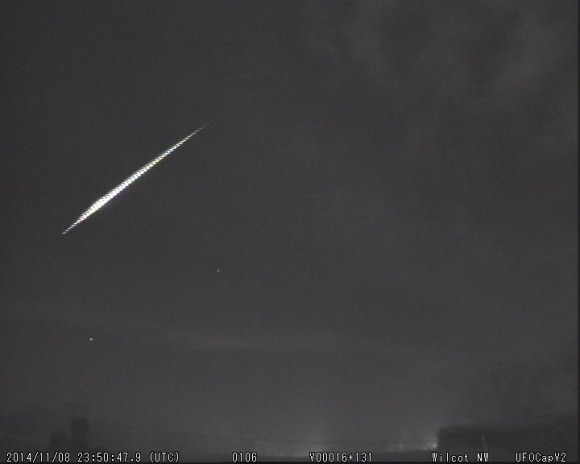
First, however, a caveat is in order. Meteor showers never read prognostications and often prove to be fickle, and wild card meteor storms doubly so.
Not to be confused with the straight up Monocerotids which peak in early December, the Alpha Monocerotids are moderately active from November 15th through the 25th, with a soft peak on the 22nd. And though the radiant derives its name from the brightest star in the rambling constellation of Monoceros the Unicorn, the radiant is actually located at its peak at right ascension 7 hours 46 minutes and declination +00 degrees 24 minutes, just across the border in the constellation Canis Minor.
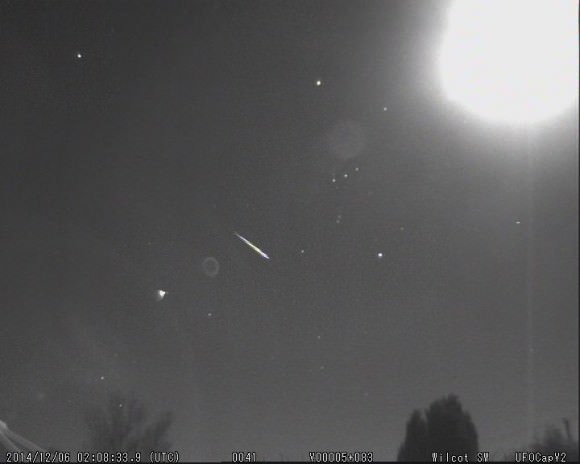
The Alpha Monocerotids have a curious history. They first caught the keen eye of observers in 1925, when F.T. Bradley watching from rural Virginia noted 37 meteors over a 13 minute span. In the 20th century, small outbursts seemed to ply the skies around November 22nd on the fifth year of each decade, with brief outbursts seen in 1935 and 1985. NASA astronomer and SETI Institute research scientist Peter Jenniskens predicted a 1995 outburst, and as predicted, a brief 30 minute display greeted members of the Dutch Meteor Society based under dark skies in southern Spain. The shower had a brief 5-minute climax in 1995, with an extrapolated zenithal hourly rate of 420.
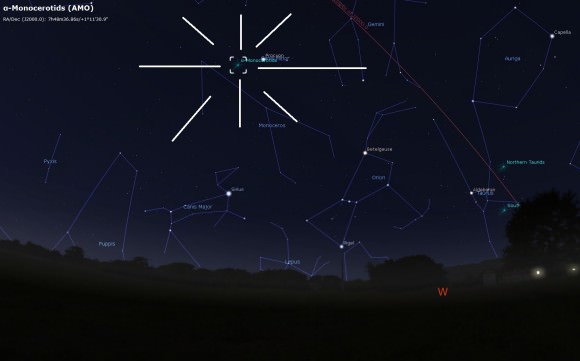
Prospects for the shower in 2015
As of this writing, a major outburst from the Alpha Monocerotids isn’t predicted for 2015… but you just never know. It’s always worth watching for an outburst on the night of November 21/22nd, especially in years ending in five.
In 2015, the Moon phase for the night of Saturday/Sunday November 21st/22nd is waxing gibbous and about 79% illuminated and setting at around 1:00 AM local, putting it safely out of view.
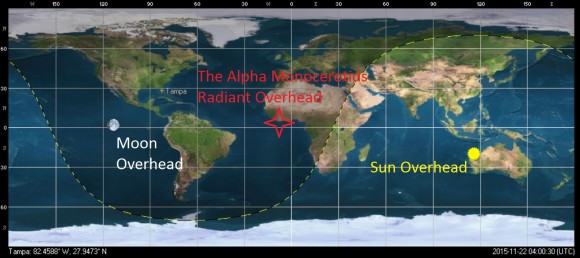
The predicted peak for the 2015 Alpha Monocerotids is centered on 4:25 UT/11:25 PM EST as per the International Meteor Organization (IMO), favoring western European longitudes in a similar fashion as 1995 at dawn on Sunday, November 22nd.
Thus far, the source comet for the Alpha Monocerotids remains a mystery, though a prime contender is Comet C/1943 W1 van Gent-Peltier-Daimaca. Discovered during the Second World War, this comet has an undefined long period orbit, and reached perihelion 0.87 AU from the Sun on January 12th, 1944.
Jenniskens notes that orbital configurations of Jupiter and Saturn may play a role in the long term modification of meteor streams such as the Alpha Monocerotids. A fascinating discussion on predicting meteor outbursts and the evolution of meteor streams by Mr Jenniskens can be read here.
The stream seems to have a very brief burst of activity of less than an hour, reminiscent of the elusive January Quadrantids. The Alpha Monocerotid radiant sits highest in the sky at around 4 AM local, and the incoming speed of the meteors is a very respectable 65 kilometers a second, making for brief swift trails.
Meteor Watching and Reporting
But beyond just observing, many sky watchers choose to log what they see and report it. Meteor shower streams—especially obscure ones such as the Alpha Monocerotids—are often poorly understood, and observers provide a valuable service by counting and reporting the number of meteors seen over a particular period of time.
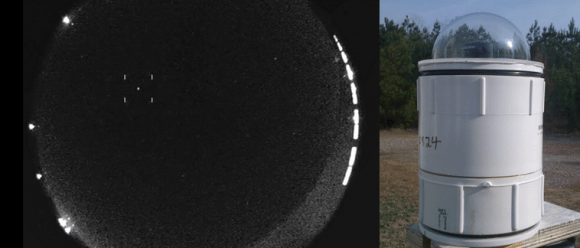
Imaging meteors is as simple as setting up a DSLR on a tripod for wide angle shots, and taking repeated exposures of the sky. We generally take a few test shots to get the ISO/f-stop mix just right for the current sky conditions, then set our intervalometer to take repeated 30-second exposures while we visually observe. Aim about 45 degrees away from the radiant to catch meteors in profile, and check the camera lens periodically for morning dew. We generally keep a hair dryer handy to combat condensation under moisture-laden Florida skies.
Maybe a vigil for an Alpha Monocerotid outburst is an exercise in hunting unicorns… but watching an outburst would be an unforgettable sight. Perhaps, the Alpha Monocerotid stream is on the wane in the 21st century… or a new outburst is still in the wings, waiting to greet dawn residents of the Earth.

